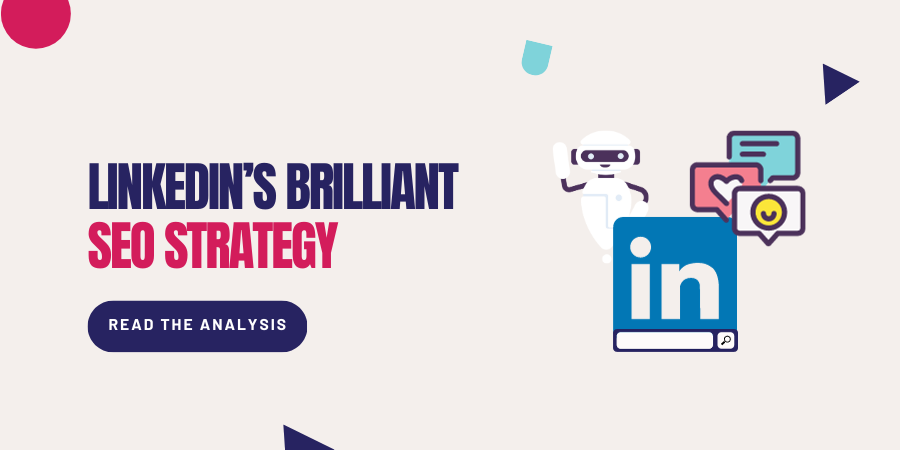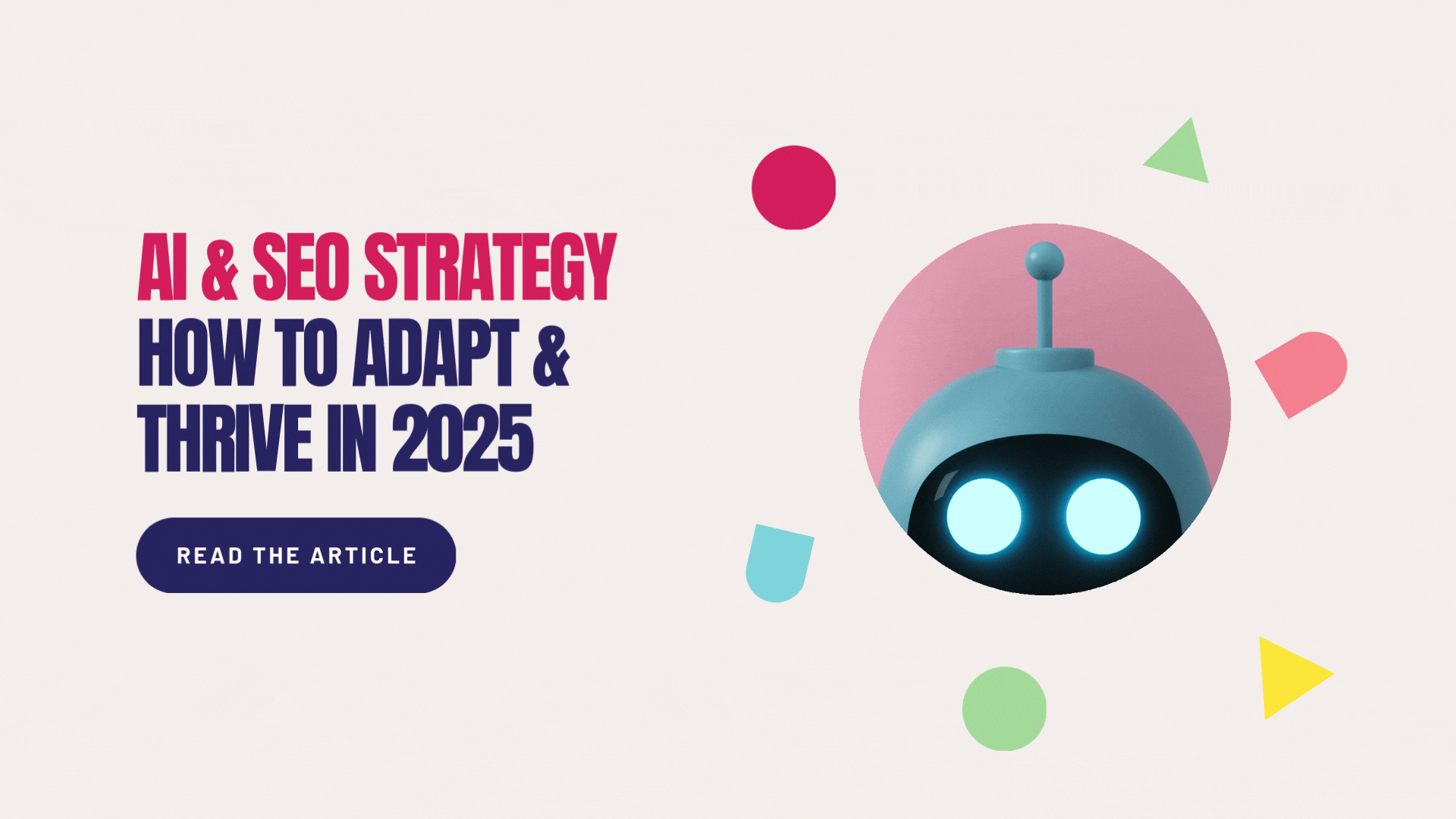The second half of 2022 will probably go down in history as one of the most dramatic periods in the history of SEO.
Sometime between Google’s landmark Helpful Content Update and the thunderous release of ChatGPT to the public, the content SEO game changed forever.
The impact of that period is still very much alive across the SEO landscape, as brands and content creators scramble to effectively integrate AI-generated content into their strategies all while keeping up with Google’s ever-evolving guidelines.
And while all the SEO luminaries were busy searching for the winning formula, the Philosopher’s Stone that would help them crack the code to a successful content strategy, one brand went ahead and did just that, quietly.
What’s more impressive, this brand is hardly known for SEO thought leadership. Instead, it mainly deals in job postings, networking, and corporate humblebrag. So, without any further ado, allow me to present LinkedIn and their brilliant all-birds-one-stone recipe for SEO content success in 2023 and beyond.
Table of Contents
SEO Milestones: The Tectonic Shifts & State of SEO Heading into 2024
Before we dive deep into LinkedIn’s recipe, let’s first explore the ingredients — that is, the factors that have shaped and keep shaping the SEO landscape as we know it today.
#1. AI Content Generation
When ChatGPT became available to the public back in November 2022, its reception in the SEO and content marketing circles was mixed.
In one camp, you had the staunch disbelievers who claimed that the industry would never fully embrace AI content tools due to concerns around originality, accuracy, and reliability. The likes of ChatGPT, they claimed, would never be able to create content that can rank on Google and provide real value to the users.
For a while, it seemed like even Google was on their side, with the famous “content written by people, for people” notion that informed the August 2022 Helpful Content Update (more on that later).
In the other camp, you had enthusiasts and early adopters who were excited about the dawn of the AI era. The degrees of enthusiasm in this camp varied. Some were looking forward to harnessing the power of ChatGPT to make their jobs easier and perform tasks/churn content faster. Others were exploring potential new career paths, seeing as language models were about to make their jobs obsolete. Nevertheless, the consensus was that ChatGPT would become the dominant method of SEO content creation moving forward.
As it often happens, the real outcome landed somewhere in the middle. ChatGPT outlived the initial hype and thrived, but it didn’t end up monopolizing the content creation market either.
me: *presents my 800 article/m AI content strategy at the quarterly meeting*
my ceo: pic.twitter.com/GR50eY6v3C
— Ryan Law (@thinking_slow) May 24, 2023
Despite its limitations, it became the go-to tool for around 50% of businesses looking to create quality content efficiently and at scale, whether that’s templated web copy or batches of meta descriptions. And yet, despite its capabilities, it still very much requires human input for prompting, fact-checking, and editing.
This created a dilemma for content creators: what’s the point of using ChatGPT for its efficiency when someone still needs to carefully go over the platform’s output? Well, turns out there is a point — if creators can rely on someone other than themselves for AI content moderation.
Stay tuned for LinkedIn’s brilliant solution.
#2. Google’s Helpful Content Updates
Google’s seminal August 2022 Helpful Content Update was designed to push back against low-quality content proliferated by poorly managed machine-generated content.
With the update, Google started prioritizing the eponymous helpful content in search results. According to Google, such content must be “written by people, for people” and focus on providing real value to the users.
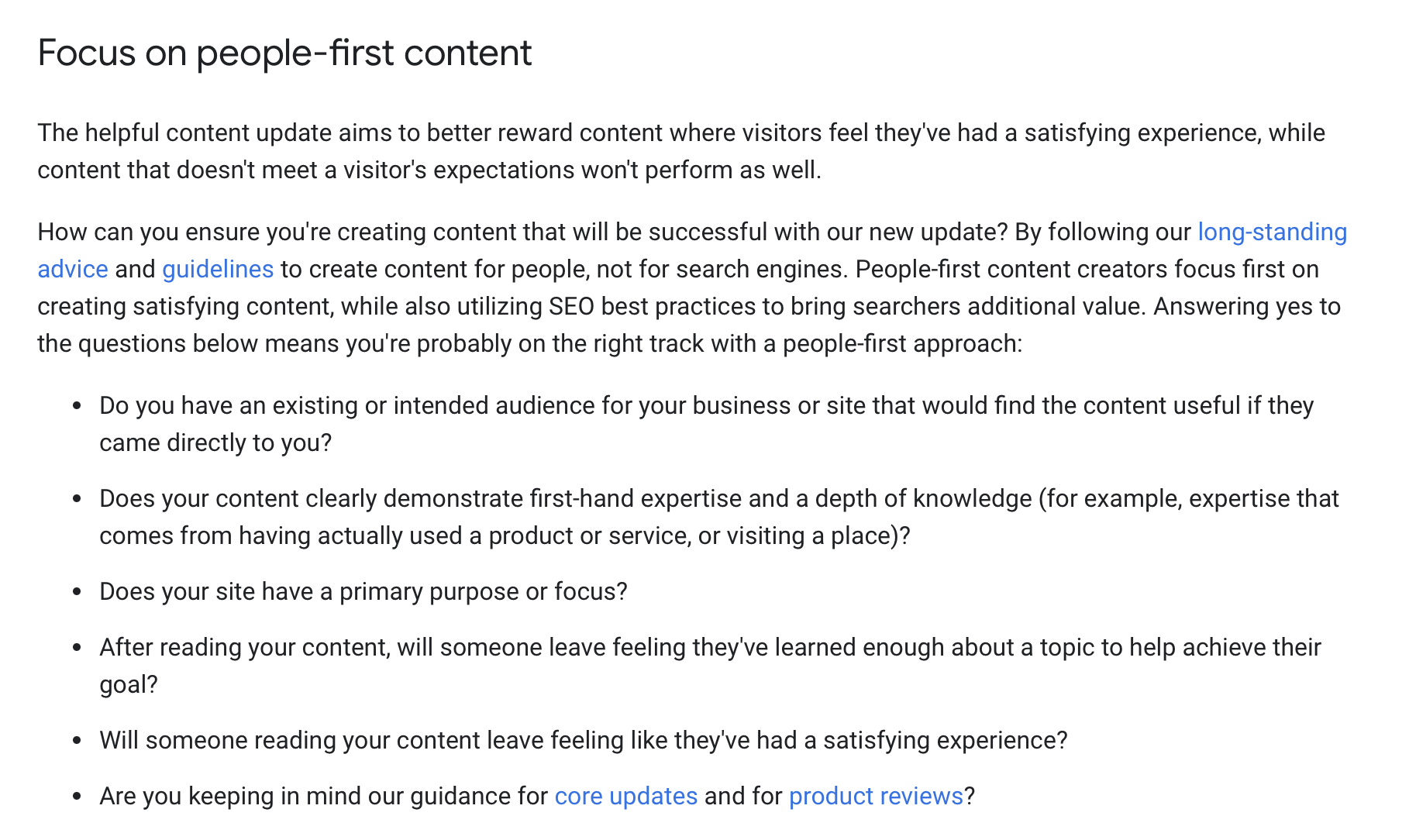
[Source: Google]
In other words, the new goal for good content is user experience, not just good SEO. Content that’s original, well-crafted, tailored to meet a specific search intent, and published on a reputable website with good UX will perform better than run-of-the-mill “traditional” SEO content.
Google has been plagued by low-quality, SEO-first content for years prior to the chatbot’s release, so it is unlikely that the update came as a direct response to ChatGPT and other AI content generation tools. Nevertheless, Google’s prediction was that the widespread usage of such a powerful content generator would only make matters worse.
It’s hard to say whether Google’s fears ever truly came to life — after all, content generated with ChatGPT is not inherently bad quality. Moreover, in a recent amendment to the content guidelines, Google dropped the “created by people” verbiage from the core helpful content criteria, as if to embrace AI content generators.
#3. Google’s Quality Rater Guidelines (QRG) Update
For years, Google’s QRG — the framework for evaluating content quality — has been defined by the following factors:
- Expertise: Whether content showcases the creator’s knowledge of the subject matter
- Authoritativeness: Whether the content creator and publisher can be viewed as authoritative sources in the subject matter.
- Trustworthiness: Whether the content creator and publisher have an established track record of providing accurate insights.
Together, these three factors are known as the EAT framework.
Following the August 2022 Helpful Content Update, Google decided to revise this framework — in a similar spirit and for similar reasons. As a result, in December 2022, the QRG gained an extra E, standing for Experience, and the framework evolved to become E-EAT.
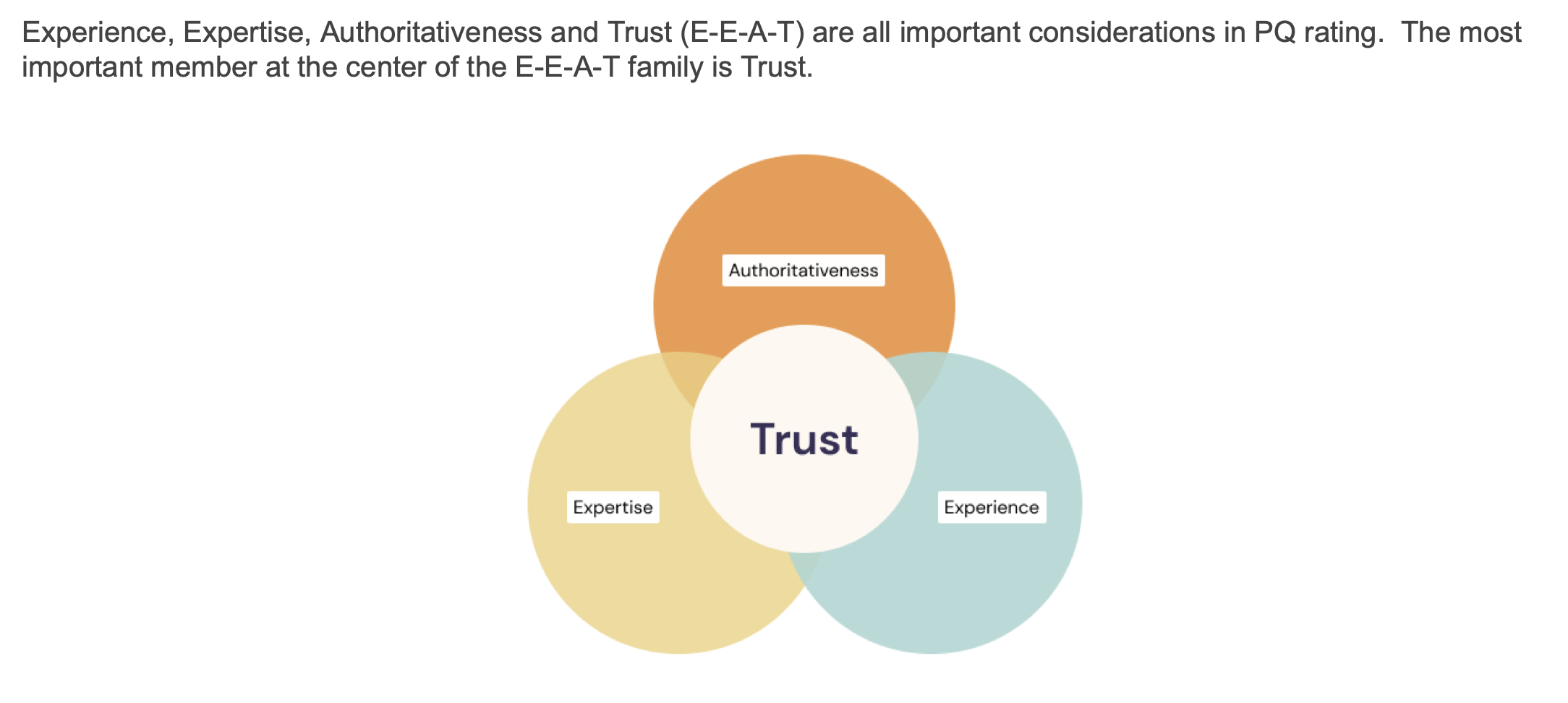
[Source: Google]
Google argued that the Experience factor plays a big role in the context of “helpful content created for people.” That makes sense: in the sea of content regurgitated by AI tools, the authentic first-hand experience of the content creator is the one guarantee of uniqueness.
Experience is intrinsically unique and, as such, effectively differentiates generic, machine-generated content from fresh perspectives that only human-generated content can bring to the table.
#4. User-Generated & Community-Driven Content
The fourth major trend shaping the SEO content landscape today is the growing prominence of User-Generated (UGC) and community-driven content.
We don’t have to look far and wide for evidence of this trend — consider the fact that over the course of the past two years, Google rolled out six whole updates primarily concerned with product reviews and their impact on search rankings.
And while reviews are among the most prominent and plentiful forms of UGC, they’re not the only kind. Whether you look at Reddit, TikTok, X (aka Twitter), or the hero of this article, LinkedIn, it’s evident that real insights from real people are more in demand than ever, at least among search engines. And, as you can probably already tell, this trend almost perfectly mirrors Google’s predictions and desire for human content generated from the position of experience and wisdom.
Google Search Console tip for SEOs: don’t forget about the impact of Twitter/X carousels.
If a URL is shared here & gets placed within a carousel on Google, the impressions (and even clicks) can show in your data.
Here’s a case study + more info: https://t.co/ZweWaIbdw3 pic.twitter.com/K7c30cbLJx
— Brodie Clark (@brodieseo) September 20, 2023
As a result, it only makes sense that UGC and community-driven content should be an important element of any content strategy in this day and age. The problem that content creators are facing here, however, is that this type of content cannot be created artificially.
Instead, it requires brands to cultivate communities, build relationships with thought leaders, and use their platforms to amplify existing voices — which is precisely what LinkedIn is doing.
Summary
Let’s summarize the state of SEO content marketing in 2024. It is now quite easy to create high-quality content at scale with ChatGPT. But if you want this content to be successful, that’s just the beginning.
You also need to make sure this content is focused on answering real questions, meets real search intent, and adds new/unique value to search engine results. It also needs to have real human penmanship and experience behind it, be conversation-provoking, and, last but not least, be SEO-friendly.
No easy feat.
LinkedIn’s Winning Formula to E-EAT
Surprisingly, the solution to the content puzzle came from LinkedIn and their Pulse community blog, also known as LinkedIn Advice or simply as “collaborative articles.”
For context, LinkedIn launched Pulse back in 2012 as an exclusive platform for influencers, which gradually evolved to become a de-facto community blog, accessible to all users. Pulse peaked sometime around the end of 2018 and was pretty much forgotten since then.
That is, until LinkedIn presented a new incarnation of it — a blog platform for collaborative articles, generated by AI but refined and expanded upon by LinkedIn users.
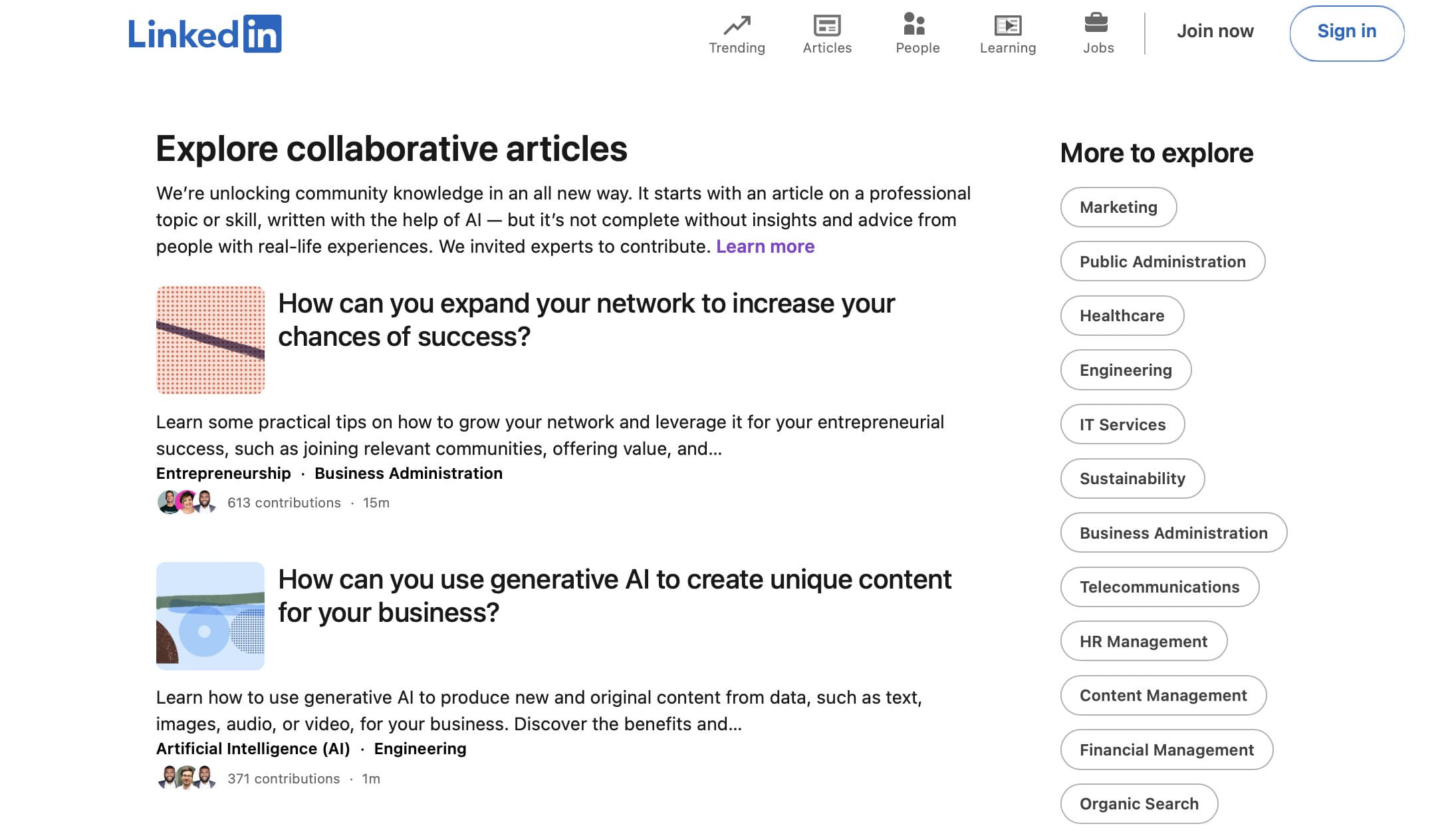
[Source: LinkedIn]
If the premise seems deceptively simple — LinkedIn outsourcing the proofreading of AI content to its users — that’s because it is. But this is precisely where the brilliance of LinkedIn’s approach lies.
It’s not the AI-generated content that makes Pulse/Advice collaborative articles so insightful. It’s the community notes.
For example, let’s take a look at an SEO article about the top skills required for a Digital Marketing role:
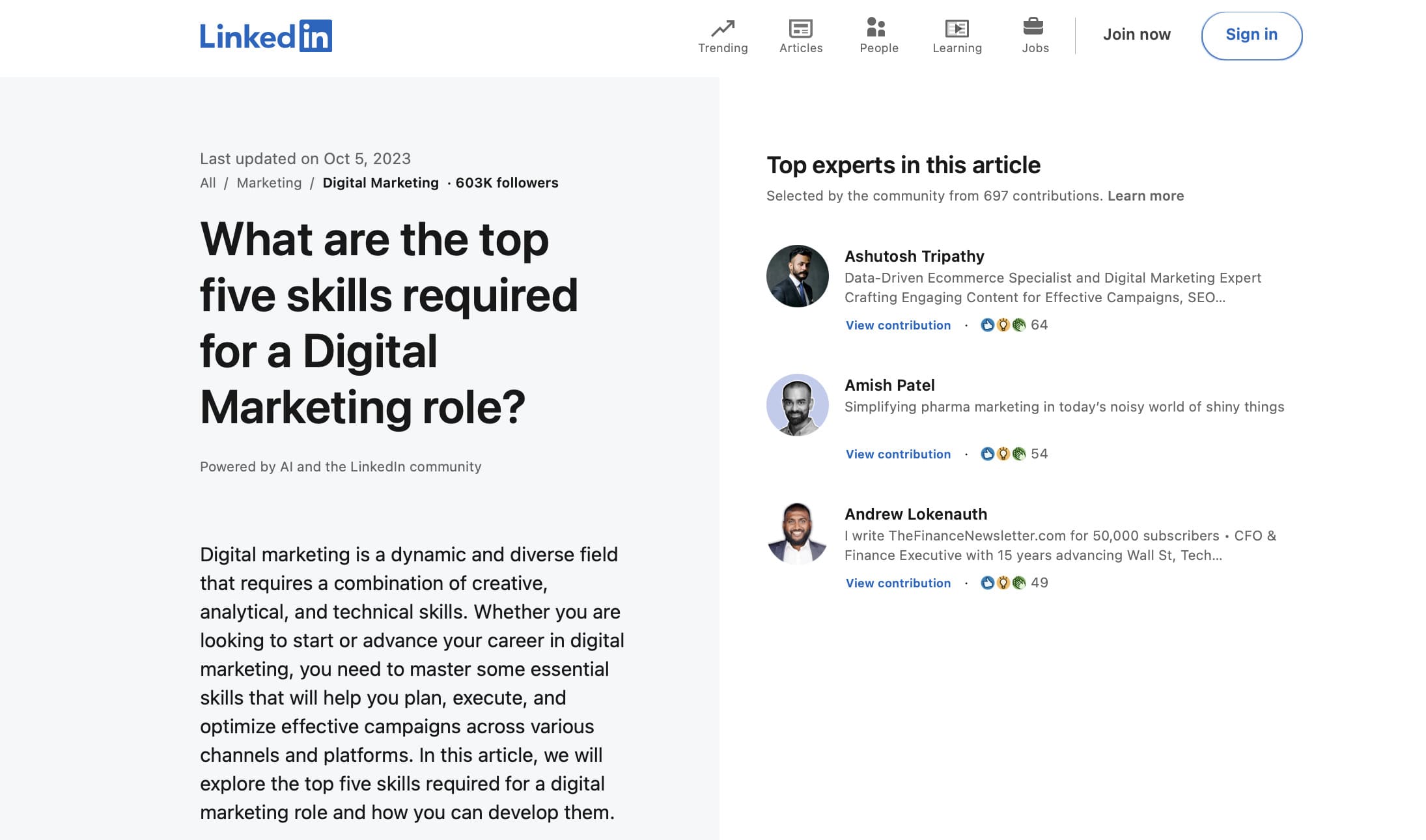
[Source: LinkedIn]
From the get-go, you can see how much LinkedIn is leaning on the community element by listing the “top experts” for the article and inviting you to contribute.
The piece itself is then broken down into individual points, with each complimented by additional notes and insights from the aforementioned experts:
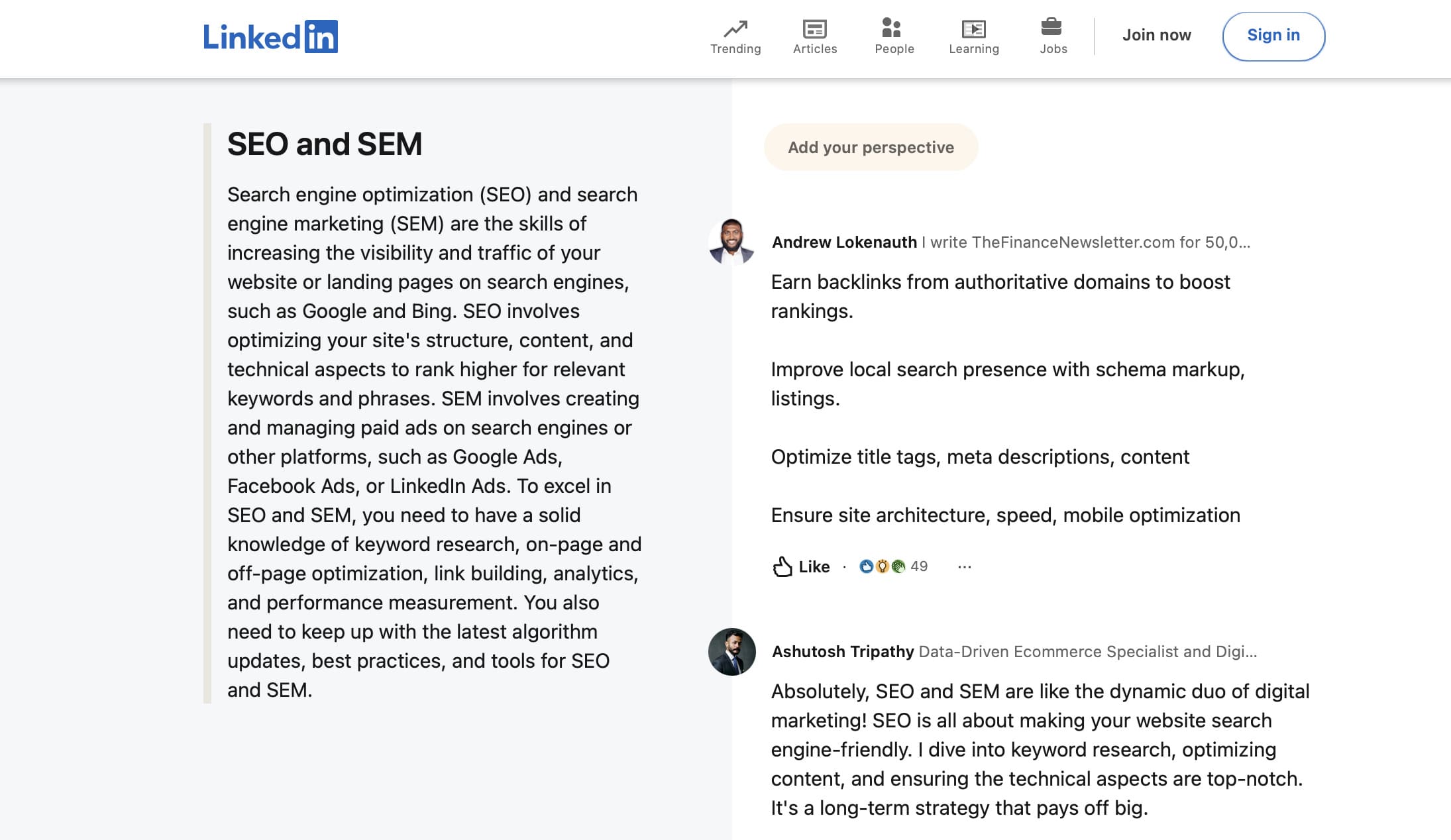
[Source: LinkedIn]
Again, seems simple enough, doesn’t it?
But the fact that it’s simple doesn’t make it any less brilliant. And if you’re still doubting LinkedIn’s recipe, one quick look at the traffic their articles are getting should dispel all reservations you might have:
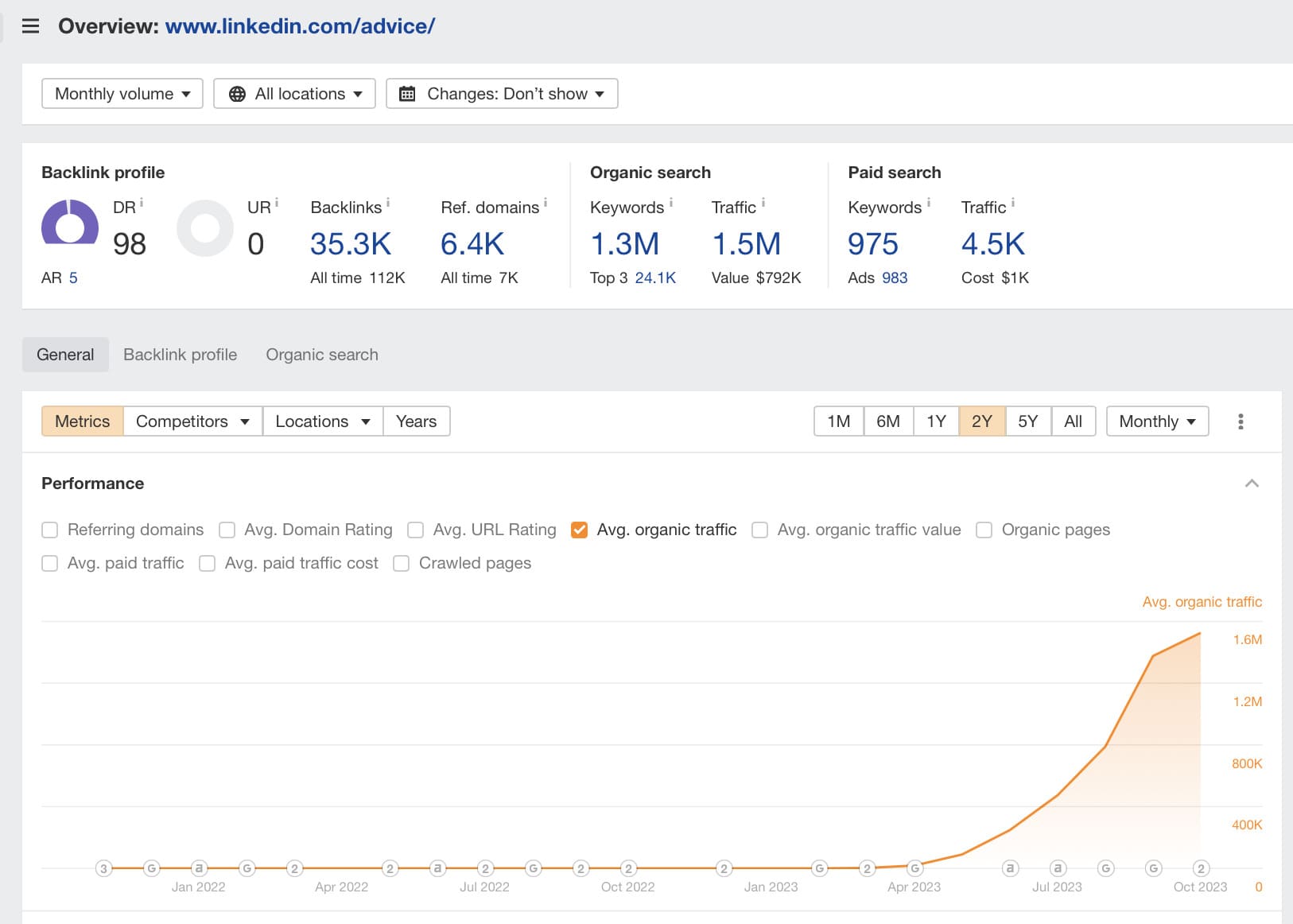
[Source: Ahrefs]
The collaborative content launched in the first week of March 2023 and achieved exponential traffic growth all the way to 1.6+ million over the course of the next six months or so — the proverbial “hockey stick” traffic graph.
And that’s just the AI-based content — the “regular” Pulse, which houses the rest of LinkedIn’s UGC, was effectively brought back from the dead with Google’s September 2023 HCU:
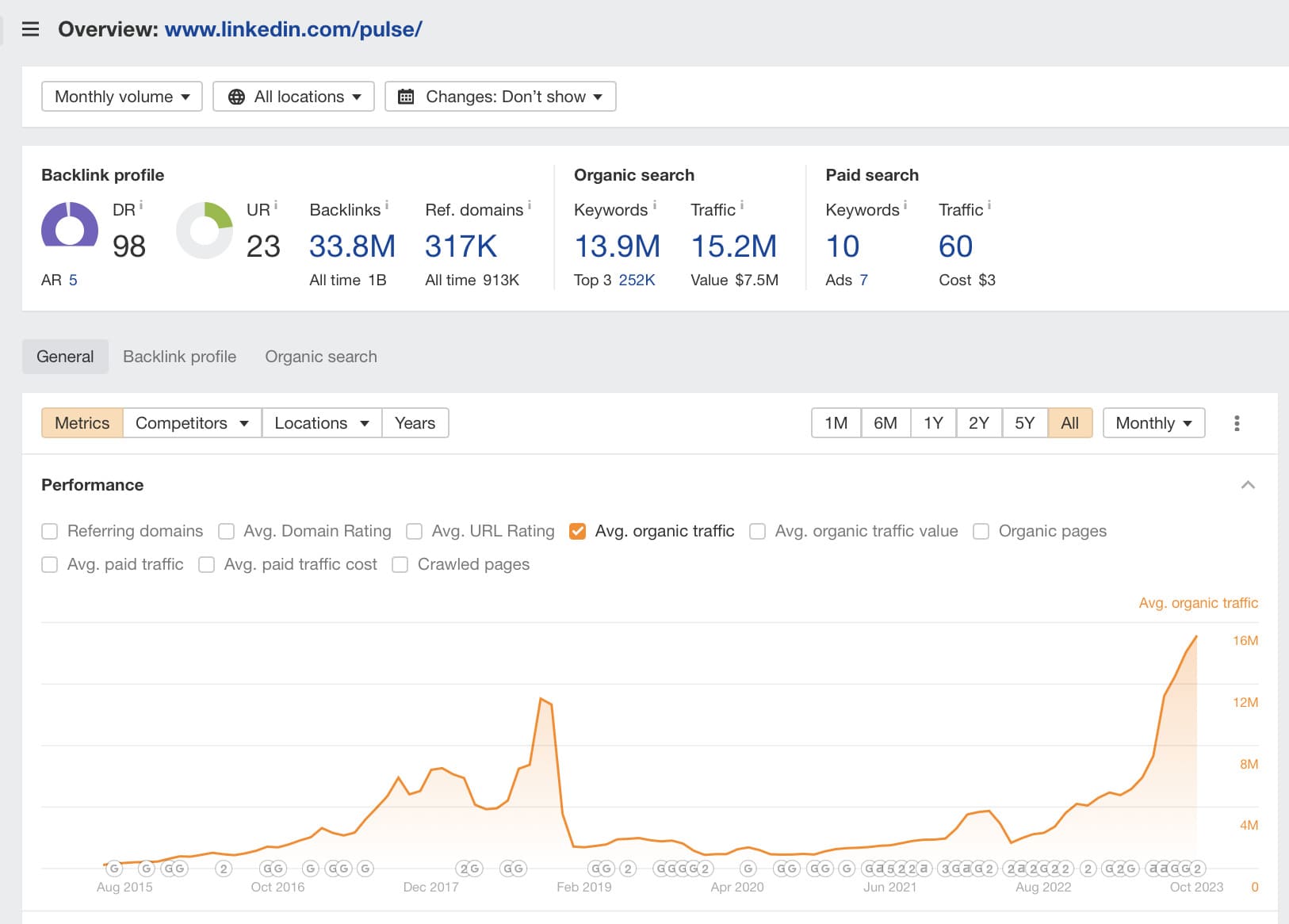
[Source: Ahrefs]
Now we know just how successful LinkedIn collaborative articles have been for them. But let’s explore the more important topic — why they ended up being so successful.
The short answer is: with the collaborative content, LinkedIn fulfilled all of Google’s latest content quality criteria to a T and masterfully navigated the 2023/2024 SEO content game.
Here’s how LinkedIn did it.
First, LinkedIn seems to recognize the limitations of AI-generated content — namely, that you cannot solely rely on the language models’ output. Instead, it uses AI copy as a foundation upon which the contributors build and share their insights.
Second, LinkedIn leverages the power of its vast and engaged community to tap into the UGC trend. Let’s be honest — passionate LinkedIn users are notorious for how much they love engaging in professional discourse and sharing their own wisdom. All LinkedIn did was give them yet another platform for them to engage in discussion. This is a win-win situation for both parties: LinkedIn gets its UGC, and the influencers get engagement.
Third, LinkedIn faithfully follows and takes advantage of Google’s helpful content criteria. The collaborative articles are explicitly created “for people,” spark conversations, and contain valuable insights sourced from the contributors’ own Experience. Moreover, the contributors themselves are, in most cases, recognizable voices in their own niches that boast faithful, engaged followers. Meanwhile, LinkedIn strong brand recognition and authority contribute to boosting the content’s Trustworthiness.
Fourth, the topics that are covered on the platform all have SEO potential, even if they are minimally optimized. If you take a closer look at the feed, you will find that all article titles are questions. Meaning, they all effectively function as long-tail keywords and long-tail keywords are a staple of the SEO game nowadays. They are much easier to rank for and allow you to really hit the nail on the head when it comes to attracting users with the correct search intent.
When you put all these factors together, you get a 360-degree approach to creating content that is guaranteed to drive traffic — as evidenced by LinkedIn’s performance data.
Exploring the Precedent: Can Other Brands Recreate LinkedIn’s Success?
LinkedIn did very well for themselves with the collaborative articles. Naturally, this case poses a question: does LinkedIn’s approach set a precedent, developing a strategy that other brands can try to recreate?
After all, LinkedIn’s content formula is seemingly bulletproof: AI + E-EAT + UGC + SEO-worthy topics = Incredible Organic Traffic and Engagement.
To give a straight answer: at this point, it doesn’t seem very likely that other brands can recreate LinkedIn’s recipe word-for-word with similar results, and here’s why:
Despite the fact that LinkedIn is not really known for SEO, it is not a coincidence that such a successful approach was pioneered by them. Sure, there are numerous other brands that have great track records for thought leadership in the SEO content area, as well as brand recognition and authority to match.
However, LinkedIn’s position is unique because of one ace up the sleeve that most other brands don’t have — community and culture.
Of course, all elements of LinkedIn’s formula contributed to their success. But from all those factors, the UGC and community element probably had the biggest impact. If it wasn’t for their passionate users and unique collaborative culture, the collaborative content wouldn’t have seen such incredible results.
In other words, it’s not so difficult to create helpful, valuable content that matches Google’s and the industry’s criteria for success, but you can’t just create a community that would engage with that content overnight.
So, what can brands and content creators learn from LinkedIn’s success and integrate into their content strategies?
#1. Community is Everything
You cannot create a community artificially, but you can very much nurture it and help it grow.
Considering how important personalized content and human interactions are becoming, it is imperative that brands should try to cultivate communities of their own, whether that means creating a forum section on their website or starting a subreddit.
For inspiration, check out HubSpot’s dedicated community forum hosted on their website:
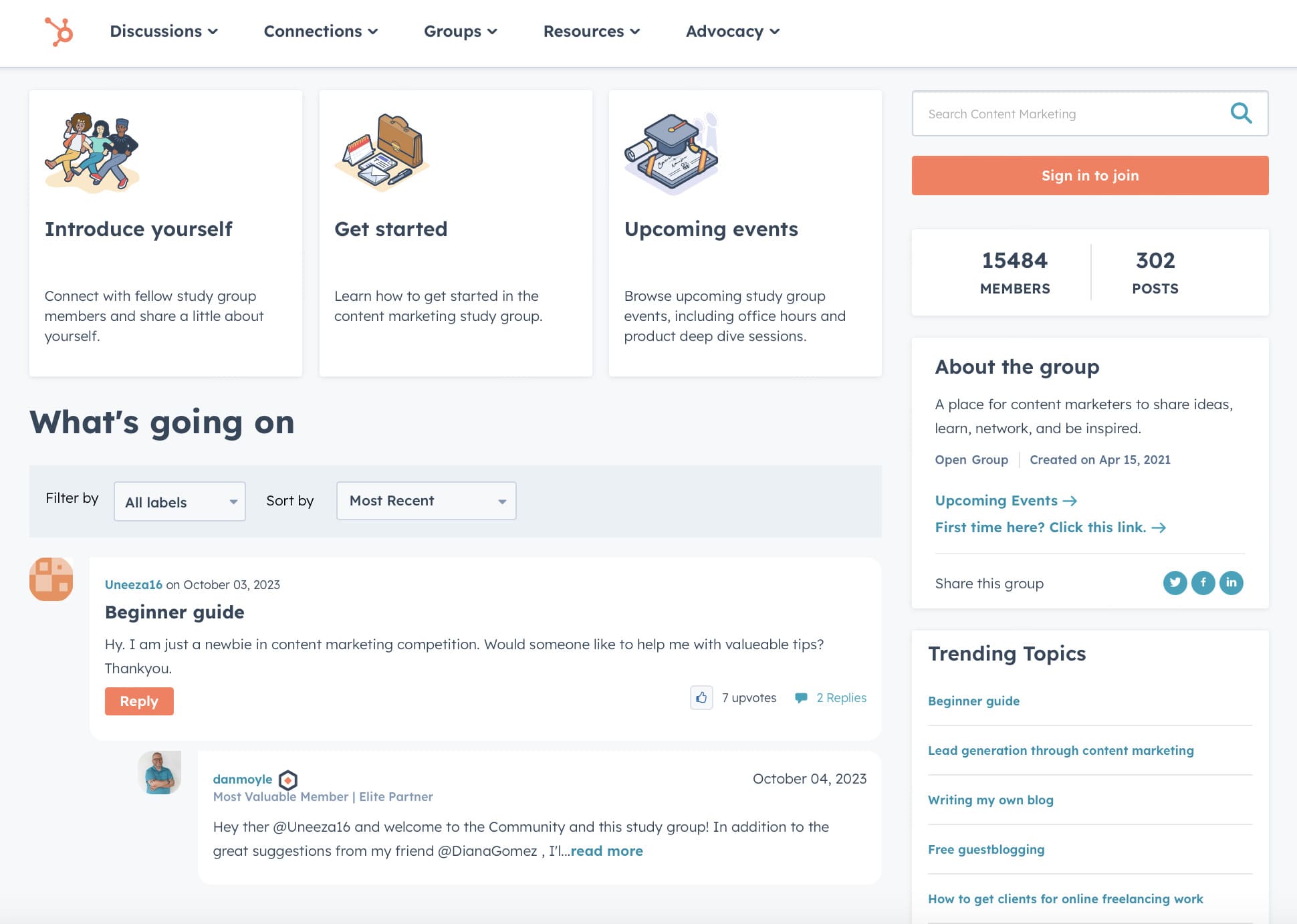
[Source: HubSpot]
#2. Engage with Power Users & Influencers
Product advocates and champions are some of the greatest assets any brand can have. However, they are an asset that’s often underutilized.
For example, if you’re looking to create valuable content driven by Experience, you can invite your thought leaders to contribute, even if it’s just a few quotes.
Just like in LinkedIn’s case, this would be a win-win situation for you and for your contributors — you will get a human Experience angle for your content, and they will get a platform to share their ideas.
Then again, harvesting UGC and contributions from power users is easier said than done. To begin with, influencer contributions are often not free, and brands are reluctant to engage with influences due to their fear of exorbitant price tags (often rightfully so).
Nevertheless, there are still ways brands can engage with their audiences and thought leaders cost-effectively. For example, the HARO community can be a great source of insights and real experiences from people who are also likely to help you promote your content by sharing it.
Or, you can consider investing in an organic social media strategy that inspires and stimulates two-way communication between you and your audience.
#3. SEO Content Should Embrace Search Journeys
Finally, LinkedIn’s success story is living proof that Google’s long-promised shift from search results to search journeys is finally taking place.
In case you missed it: back in 2018, Google announced that they would change their approach to displaying information to users. For most of its existence, Google’s algorithm focused on giving users answers to their queries in the fastest and most straightforward manner possible.
However, users’ online behaviors have evolved since the early days of SEO. Nowadays, people rarely search for a specific topic in isolation, and their search process often extends beyond the moment they type something into the search bar.
For example, a user searching for “what is meditation” will probably not stop with their journey after they get a direct answer. Instead, they will probably continue their exploration by asking about the “health benefits of meditation,” “types of meditation,” and, finally, “free meditation courses” — the real end goal of their original query.
The same can be said about LinkedIn’s collaborative articles and their success. Someone who’s searching for “ways to expand professional network” isn’t just looking for generic tips. They want, through their search journey, to actually expand their networks, and the content they get in the search results should direct them to real people they can connect with.
And there is hardly a better place for networking than LinkedIn, isn’t there?
Long story short: brands shouldn’t just create standalone pieces of content but, rather, cultivate interconnected ecosystems of blogs, landing pages, and downloadable collateral that appeal to a user for the duration of their content journey.
Think strategically about your content and make sure that every single article fits into the bigger picture of what your audiences are searching for.
Conclusions, Takeaways & Predictions
When it comes to the AI + E-EAT + UGC + SEO formula, LinkedIn is both the pile of gold and the dragon perched on top of it. They brilliantly merged their strong community and brand equity with the latest content marketing trends for outstanding results.
For now, there are no brands that could successfully replicate the exact same approach and compete with LinkedIn. However, the emphasis here is on for now — it’s too early to tell how sustainable LinkedIn’s formula will be in the long term, as SEO trends & Google’s guidelines are constantly evolving, especially where AI is concerned.
Nevertheless, what brands and content creators can and should do is take inspiration from LinkedIn’s daring approach. If anything, their collaborative articles proved that it’s possible to rely on AI for high-quality content with great SEO potential — as long as you introduce the human element into the mix.
All in all, LinkedIn’s case is just proof that brand communities, genuine human interactions, and UGC are prerequisites for a winning SEO game.





